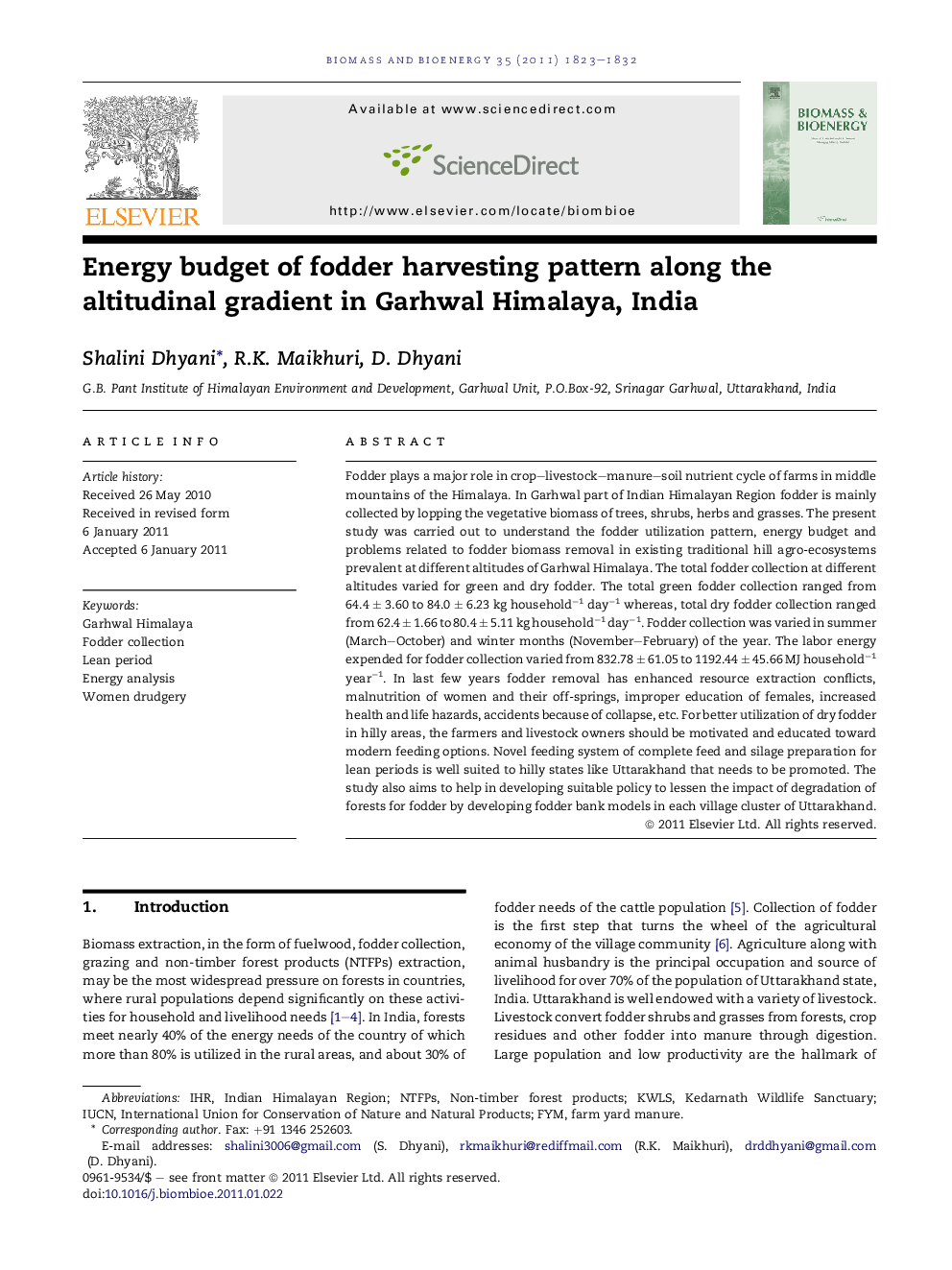| Article ID | Journal | Published Year | Pages | File Type |
|---|---|---|---|---|
| 677728 | Biomass and Bioenergy | 2011 | 10 Pages |
Fodder plays a major role in crop–livestock–manure–soil nutrient cycle of farms in middle mountains of the Himalaya. In Garhwal part of Indian Himalayan Region fodder is mainly collected by lopping the vegetative biomass of trees, shrubs, herbs and grasses. The present study was carried out to understand the fodder utilization pattern, energy budget and problems related to fodder biomass removal in existing traditional hill agro-ecosystems prevalent at different altitudes of Garhwal Himalaya. The total fodder collection at different altitudes varied for green and dry fodder. The total green fodder collection ranged from 64.4 ± 3.60 to 84.0 ± 6.23 kg household−1 day−1 whereas, total dry fodder collection ranged from 62.4 ± 1.66 to 80.4 ± 5.11 kg household−1 day−1. Fodder collection was varied in summer (March–October) and winter months (November–February) of the year. The labor energy expended for fodder collection varied from 832.78 ± 61.05 to 1192.44 ± 45.66 MJ household−1 year−1. In last few years fodder removal has enhanced resource extraction conflicts, malnutrition of women and their off-springs, improper education of females, increased health and life hazards, accidents because of collapse, etc. For better utilization of dry fodder in hilly areas, the farmers and livestock owners should be motivated and educated toward modern feeding options. Novel feeding system of complete feed and silage preparation for lean periods is well suited to hilly states like Uttarakhand that needs to be promoted. The study also aims to help in developing suitable policy to lessen the impact of degradation of forests for fodder by developing fodder bank models in each village cluster of Uttarakhand.
► Fodder extraction from forests is a major issue in Indian Himalayan Region. ► Quantification of fodder biomass harvested (both green and dry fodder) and equivalent energy value along with the labor energy expenditure in harvesting fodder has been worked out in the study. ► Study tries to provide an overall view of the issue that leads to drudgery of rural hill women, resource extraction conflicts, malnutrition of women and their offsprings, improper education of females, increased health and life hazards, accidents etc. ► As a highlight of the paper we have also tried to provide solutions to the problem as silage preparation, development of fodder banks and by improving the feed quality and method of feeding the cattle.
